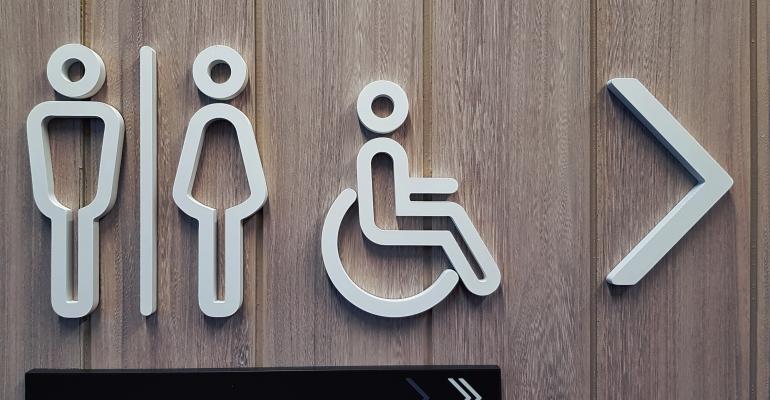Tahira Endean, CMP CED, author of Intentional Event Design, and Mariela McIlwraith, CMP, CMM, MBA, director of industry advancement, Events Industry Council, recently hosted a session on welcoming events at IMEX America.
After providing examples of how our own backgrounds and experiences can shape event design, Endean and McIlwraith provided practical tips for meeting planners to overcome any unconscious biases.
Images McIlwraith cautioned against thoughtlessly using stock images for invitations or event presentations. She gave the following examples of the images that came up when she used particular image search terms:
• “Leadership Conference”—men in suits
• “Cybersecurity”—an Asian male
• “Work-life balance"—a woman in a messy house
The lesson: Think about the message an image conveys before using it. A member of the audience at the session cautioned others to be wary of images that appear to represent diversity; she gave the example of using an image where people of color were included but shown in a subservient role.
(Re)Visit the Site About 15 percent of the world’s population lives with some form of disability, and 2 to 4 percent experience significant functional difficulties. McIlwraith said, “Accommodating them is the right thing to do, but it is also the right business thing to do. More diversity means more business.” Even if you have been to a destination before, it is important to look at the venue with all of your attendees in mind. It is not enough to assume that an ADA-approved setting is all they require. Endean cautioned, “We should not be thinking about what to do in order to comply with legislation, but what can we do to include everyone.”
The lesson: Revisit the venue and consider how comfortable each meeting space will be for attendees with mobility issues and how safe they will be in the event of an emergency. Endean suggests making sure aisles are wide enough and food on buffet tables is low enough to be accessible to people in wheelchairs. “Some locations offer mobility scooters for rent, which is great, but they have a short battery life. So make sure there is a designated charging room close to your meeting space,” she said. Event signage should include wheelchair-accessible routes. Safety issues for disabled attendees can be as simple as moving potted plants and other obstructions away from elevator buttons to asking the venue for visual fire alarms in the form of flashing lights or exit signs. If your attendees have service animals ask the venue about outdoor spaces for them and rules on which rooms they can access.
Endean reminded the audience that attendees with disabilities want to participate fully, and simple accommodations can usually facilitate that. She recalled a successful AARP event she managed: “Usually a dance floor is setup for three square feet per person, but our dance floor was huge to accommodate people dancing in wheelchairs. The experience was magical!”
Timing Is Everything Site visits can also be used to time how long it takes to travel between rooms and plan how you want to schedule your sessions. For example, the audience at IMEX America was given at least 30 minutes in between event sessions so they could find restrooms, get coffee, and catch their breath before refocusing.
Provide Privacy Nursing mothers may need a comfortable place to pump, so consider renting nursing pods. Attendees with medical issues may also need a clean and private space to take or inject medications. Just because your attendees have made do with bathroom stalls or trips back to the hotel in the past doesn’t mean you should ignore their needs in the future.
Accommodate Diversity McIlwraith reminded her audience of planners to look at the dates for each event to make sure they don’t clash with religious holidays for minority groups. She also said to be aware of attendees’ religious needs. “Muslims may need directional signage to face Mecca during prayers and washrooms close to a prayer area, where you will also need to provide sufficient space for prayer rugs,” she said.
Respect Other Cultures Endean brought up the example of a group that hosted a “Totem” awards show. They may have thought that they were honoring Native Americans with the term, but it was interpreted as disrespectful at the location. She said, “Cultural appropriation can sometimes come from a good place because you want to honor the local culture, but you have to work with the right cultural authorities to do it respectfully.”
A Budget Checklist:
1. Use the tools here to make sure your registration website is accessible to everyone.
2. Ask about disabilities, allergies, and translation service requirements at registration so you can make plans with the kitchen or rent equipment ahead of time.
3. Once you know what accommodations attendees have requested, look into the best options. Different countries use different sign languages, and even international attendees who speak English may need help understanding a presenter who speaks quickly or has an accent. Rather than hire multiple different signers and simultaneous translators, one solution could be to use a court stenographer for closed captioning.
4. Planners who find themselves budgeting to rent auditory or mobility equipment should consider making it a sponsorship opportunity or adding a fundraising event to purchase the equipment so it is always available.
The presenters suggested the following resources to help manage your inclusive event:
ASAE Policy on diversity and inclusion
University Disability Services Offices will also have lots of local contacts that they can share with you.
Endean’s final piece of advice: In your marketing messages, share the efforts you've undertaken to create an inclusive and diverse event for all attendees.





